Music is the universal language
“Glory to God in the highest heaven, and on earth peace to those on whom his favor rests.” - Luke 2:14
General Interest
Ashdown Launches UK-Built Cabinets and Amps
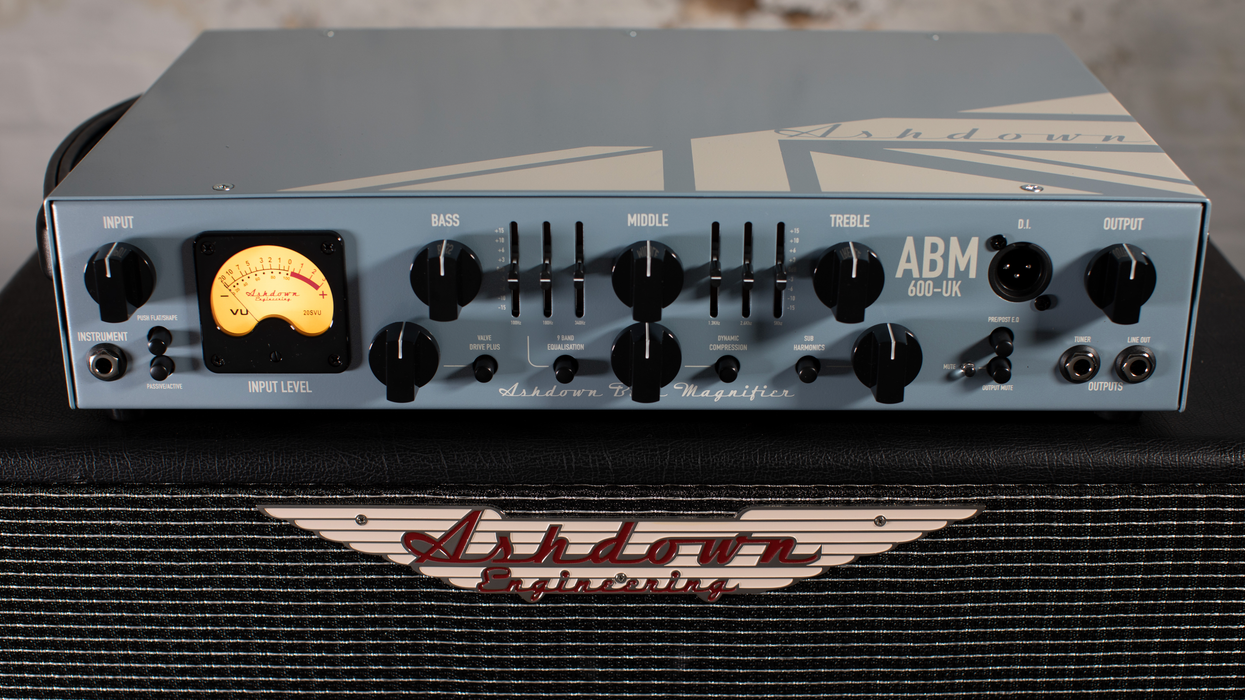
Ashdown Engineering has launched new amp and cabinet models to its flagship ABM range, now available in fully UK-built editions.
For over 25 years, the Ashdown ABM series has earned its place on some of the world’s biggest stage, trusted by professional bass players for its signature tone, flexibility, and reliability.
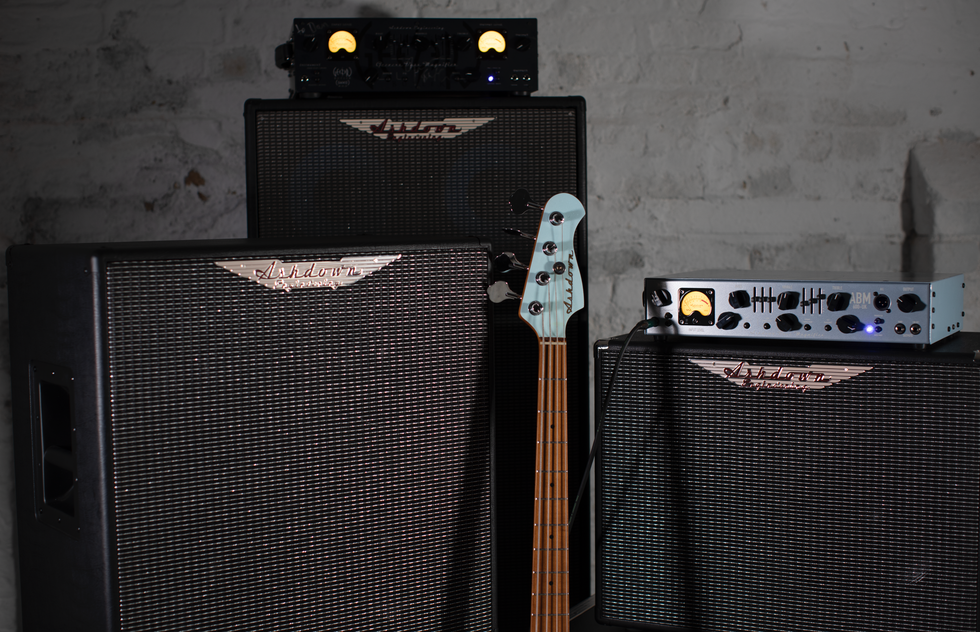
The new amps include the UK-ABM-300-EVO IV and UK-ABM-600-EVO IV. The cabinets include five newly re-engineered cabinets blending iconic ABM tone with state-of-the-art materials and superior construction, crafted entirely in the UK. The five models include the UK-ABM-810H-EVO IV, UK-ABM-410H-EVO IV, UK-ABM-210H-EVO IV, UK-ABM-115H-EVO IV and UK-ABM-112H-EVO IV.
Here are details on the two new amps. Delivering 300 watts of pure bass power, the UK-ABM-300-EVO IV combines heritage tone with modern control. Its class-leading preamp features the Variable Valve Drive Plus, giving players access to a broad tonal spectrum, from warm cleans to gritty overdrive, all foot-switchable for performance versatility. A brand-new 9-band EQ offers pinpoint tonal shaping, while the One Knob Compressor and Sub-Harmonic Generator ensure your bass remains rich, tight, and stage-ready. Professional connectivity, including FX loop, Line Input, and tuner out, make it a complete solution for live and studio applications.
For players demanding more headroom and authority, the Uk-ABM-600-EVO IV offers 600 watts of commanding power while retaining the full feature set of its 300W sibling. The enhanced 9-band EQ, signature VU meter, and foot-switchable controls for Valve Drive, Compression, EQ, and Sub-Harmonics allow seamless integration into any performance setup. Built for the modern bassist yet faithful to its roots, the UK-ABM-600-EVO IV represents the pinnacle of Ashdown’s amplifier design.
Amp specifications are as follows:
UK-ABM-300-EVO IV –
- Power Output - 300 Watt
- Speaker Outputs - 2 x Neutrick Jack/Speakon outputs
- Includes DI output, effects send and return
- Impedance - Minimum 4 Ohms
- Pre Amp Tubes - 1 x 12AX7
- H x W x D (mm) - 146 x 488 x 336
- Weight (kg) - 12.5
UK-ABM-600-EVO IV –
- Power Output - 600 Watts
- Speaker Outputs - 2 x Jack/Speakon outputs
- Includes DI output, effects send and return
- H x W x D (mm) - 146 x 489 x 336
- Weight (kg) - 12.5
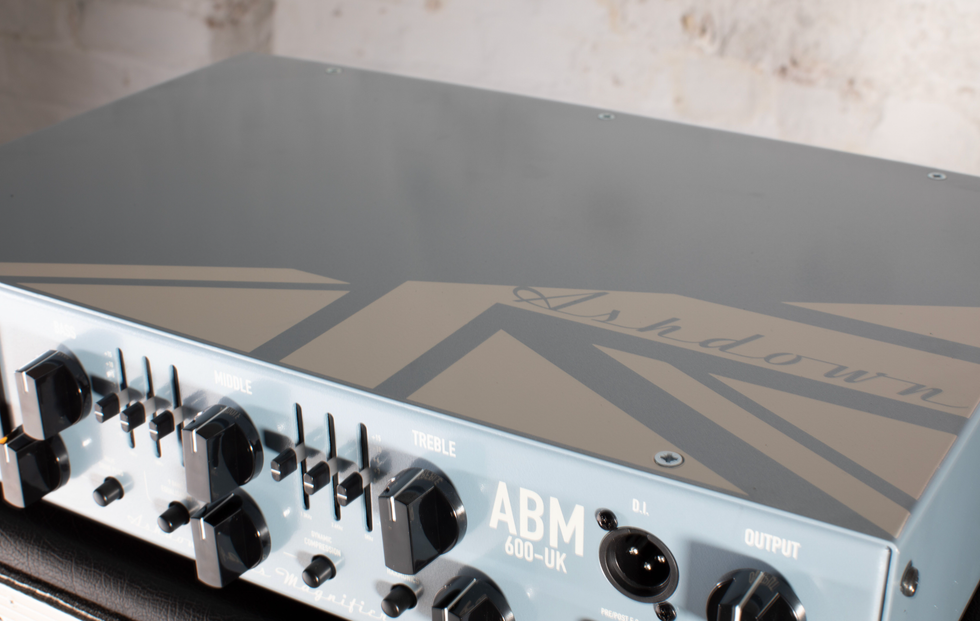
Here are details on the new line of cabinets.
- UK-ABM-810H- EVO IV, a powerhouse cabinet designed for commanding the largest of stages. Loaded with eight precision 10” ceramic drivers arranged in sealed chamber pairs, the UK-ABM-810H-EVO IV offers unmatched punch and midrange articulation. With a massive 2000W AES power handling and a switchable high-frequency horn, this is a cabinet built to deliver, night after night.
- UK-ABM-410H-EVO IV – A studio and stage staple worldwide, delivering tight response and 1000W AES of focused clarity from four 10” ceramic drivers.
- UK-ABM-210H-EVO IV – Half the size, all the tone. Ideal for smaller gigs or pairing with additional cabs, offering 500W AES.
- UK-ABM-115H-EVO IV – A 500W AES 15” cabinet for players who crave classic warmth and depth.
- UK-ABM-112H-EVO IV – Compact yet mighty, the new 300W AES 12” format is meticulously balanced and is already being heralded as the go-to cab for the range.
All cabinets feature genuine Neutrik Speakon connectors, are rear-ported for enhanced low-end performance, and are constructed from FSC-certified Mahogany plywood (or Latvian Baltic birch for the UK-ABM-810H-EVO IV) for unrivalled resonance and durability.
Cabinet specifications are as follows.
UK-ABM-112H-EVO IV
- AES Power – 300W
- Drivers – 1x12”
- Sensitivity – 98dB
- Impedance – 8 Ohms
- Magnet – Ceramic
- Dimensions (W x H x D) – 603 x 452 x 340 mm
UK-ABM-115H-EVO IV
- AES Power – 500W
- Drivers – 1x15”
- Sensitivity – 98dB
- Impedance – 8 Ohms
- Magnet – Ceramic
- Dimensions (W x H x D) - 603 x 452 x 340 mm
UK-ABM-210H-EVO IV
- AES Power – 500W
- Drivers – 2x10”
- Sensitivity – 99dB
- Impedance – 8 Ohms
- Magnet – Ceramic
- Dimensions (W x H x D) - 603 x 452 x 340 mm
UK-ABM-410H-EVO IV
- AES Power – 1000W
- Drivers – 4x10”
- Sensitivity – 102dB
- Impedance – 8 Ohms
- Magnet – Ceramic
- Dimensions (W x H x D) - 603 x 603 x 340 mm
UK-ABM-810H-EVO IV
- AES Power – 2000W
- Drivers – 8x10”
- Sensitivity – 105dB
- Impedance – 4 Ohms
- Magnet – Ceramic
- Dimensions (W x H x D) - 609 x 1150 x 415 mm
Hand-assembled at Ashdown’s UK headquarters in Essex, these amps and cabinets represent a renewed dedication to in-house engineering and local manufacturing. Every UK-ABM-EVO IV head is crafted with the same passion and precision that has defined Ashdown for decades.
For more information, visit: www.ashdownmusic.co.uk
Kirk Hammett says Tony Iommi uses “smart chords” – this is what he means

Over the years, Metallica and Black Sabbath have shared many stages; the heavy metal unit performed at Sabbath’s grand Back To The Beginning gig back in July, but they’d previously opened for Ozzy Osbourne back in 1986, while bassist Robert Trujillo was also an official member of The Prince of Darkness’s band between 1996 until 2003.
However, no matter how many times they performed together, Metallica never stopped being stunned by the talent within the Sabbath ranks. In episode 112 of The Metallica Report, Trujillo reflects on the unique style of each member of the band. “Take Bill Ward, for instance, as a drummer,” he says. “He’s so unique in his style of playing and that swing that he has, it reminds me of big band music… [Then there was] Ozzy with his very bluesy, soulful style of singing.”
He then points to guitar legend Tony Iommi and his own brand of ‘smart chords’. “His chords are – well, Kirk Hammett calls them smart chords,” he explains. “[They’re] basically jazz chords, which he incorporates into the riffs.”
Of course, Iommi’s style is partially the result of an injury he suffered as a 17 year old. Ever since slicing the tips of his fingers off at a factory job, he’s had to adjust his style, now playing with artificial leather fingertips. “Even just the fact that his fingers are different… it creates a certain sound, a certain riff,” Trujillo explains.
Elsewhere in the chat, Trujillo recalls how Ozzy’s wife, Sharon Osbourne, had initially labelled the band as an “alternative” act. “It was so different from anything that was happening back then,” the bassist says. “And there’s a lot of reasons for that… A lot of [their music] is just very unique, very soulful.”
Reflecting on Sabbath’s Back To The Beginning gig, Trujillo recalls it as being yet another reminder of why Black Sabbath are the crème de la crème of heavy metal. “They were soundchecking, and Ozzy wasn’t even on stage yet… but just hearing them warm up, it was another level,” he says.
“This is like Muhammad Ali [hitting] the speed bag – it’s that intense. It’s crazy… they’re just warming up – drum fills, some tribal beats Bill was doing, and you hear Geezer Butler [bassist] kind of noodling a bit. And then Tony [plays] some kind of chords here and there.”
He recalls watching the band run through Into The Void, a track that Anthrax would instead perform during the final show. A few members of the supporting bands watched the performance – and it was pretty emotional. “We just started headbanging, and we were all smiling… but some people were crying,” he notes. “It was so beautiful, and it was a powerful moment. Anybody that witnessed it, that’s something that they’ll probably remember for the rest of their lives.”
The post Kirk Hammett says Tony Iommi uses “smart chords” – this is what he means appeared first on Guitar.com | All Things Guitar.
“To me, progressive rock is very serious players who can really do their stuff”: David Gilmour “never thought Pink Floyd were prog rock

A conversation about prog rock titans is hardly complete without mention of Pink Floyd. But as David Gilmour explains in a recent interview with Rick Beato, he was never keen on the label.
He says that he and his bandmates “never talked about style”, and that they were creating the music they were creating “long before” the ‘progressive rock’ moniker came around.
“I’ve never talked about progressive rock, or thought that we were – whatever – progressive rock,” Gilmour tells Beato [via Louder Sound]. “To me, progressive rock is very, very serious players who can really do their stuff.”
“I think we were doing it long before the term ‘progressive rock’, and I think I was probably a grumpy old man in my 20s. You know, sort of, ‘Nah, that’s not us.’”
He concludes: “The whole idea of labelling – it’s become more essential in this day and age. But I’m not keen on it.”
Arguably, the genres by which certain bands are described are done so by fans, while artists both old and new prefer not to pigeonhole themselves as purveyors of one style of music only.
Regardless of Gilmour’s position on the ‘prog rock’ moniker, Pink Floyd are widely considered to have been behind some of the best prog albums of all time, including The Dark Side of the Moon, The Wall, and Wish You Were Here.
In other news, David Gilmour recently explained why he’s “never learned” the classic Pink Floyd guitar solo in Comfortably Numb.
“To me it’s just different every time,” he said. “Why would I want to do it the same? Would it be more popular with the people listening if I did it exactly like the record? Or do they prefer that I just wander off into whatever feels like the right thing at the time? I don’t know. I suspect they prefer it to be real, and to be happening, you know?”
The post “To me, progressive rock is very serious players who can really do their stuff”: David Gilmour “never thought Pink Floyd were prog rock appeared first on Guitar.com | All Things Guitar.
“The most important thing is to be able to hear something and play it”: Tim Henson on the importance of learning guitar by ear

What’s the most efficient way to become a better guitar player? Is it endlessly practicing scales and music theory? That certainly doesn’t hurt, but according to Polyphia guitar maestro Tim Henson, all guitarists should seek to learn as much as they can by ear.
While theory is no doubt important – and will help you better understand why certain note patterns and chord progressions work together – Henson says there’s a certain value to “learning everything you can by ear”.
- READ MORE: Strandberg launches N2 – the “most significant evolution” of its Boden headless guitars yet
“I started playing violin,” he tells The Music Zoo in a new interview [via Guitar World]. “Before I started playing guitar, I started playing at the age of three. I can sight-read violin pretty well.”
However, he says he learned to play guitar by ear, partly because “violin was so rigid, and it killed any sort of love for music”.
“It made me hate music,” he says. “Especially in classical music, you’re essentially just doing cover songs all the time. There’s no room for creativity. And when I picked up the guitar at 10, I saw it as an escape from that.”
Polyphia’s music is some of the most technically complex in the game, so for many guitarists, resorting to the tablature is a must. But Tim Henson says they should learn as much as they can by ear before checking the official tabs for accuracy.
“We sell our tablature,” he says. “It’s one of the things that helps us pay our bills, and I think it’s a great tool and a great helper. But for the young guitar players who want to play guitar, learn it by ear. Just learn everything that you can by ear.
“And if you want to get the tab afterwards to double check and maybe, if there’s something that you were struggling with that you couldn’t just quite get, sure, do it, but learn it by ear. That is going to be the most important thing for any musician is to just be able to hear it and to play it.”
The extent to which guitarists should know theory has long been a subject of debate. While most don’t discount the usefulness of theory entirely – some say it’s not necessary to make high-quality art.
Earlier this year, former All That Remains guitarist Jason Richardson said it’s not essential, explaining: “Remember, it’s called music ‘theory,’ not ‘law’.” And YouTuber Become the Knight explained how “you can have these tools in your tool belt and still make pretty mediocre art”.
A big advocate of knowing your theory, though, is jazz-funk maestro Cory Wong, who earlier this year slammed guitarists who don’t know every note on the guitar’s fretboard.
The post “The most important thing is to be able to hear something and play it”: Tim Henson on the importance of learning guitar by ear appeared first on Guitar.com | All Things Guitar.
Strandberg launches N2 – the “most significant evolution” of its Boden headless guitars yet

Strandberg has lifted the lid on N2, its new generation of headless guitars which represents its “most significant evolution yet”.
The N2 line debuts with two new models: the Boden N2 Original and Boden N2 Standard, both sporting an all-new arched body design, which brings the guitar closer to the player “for an even more comfortable and connected experience”.
- READ MORE: EarthQuaker Devices Easy Listening review – can an amp simulator this simple actually sound good?
Specs found on both models also include EGS Arc hardware – a full-body contact bridge system which maximises resonance and sustain while simplifying setup and maintenance – and a titanium-reinforced EndurNeck, with dual titanium rods for “unmatched stability, resonance and clarity across every register.
In terms of electronics, the Boden Original N2 is fitted with Strandberg’s POWR:D pickups – developed in partnership with Fishman. These deliver “distinct voicings for ultimate versatility: from fluid modern distortion to classic crunch and shimmering cleans”.
Meanwhile the Boden Standard N2 is loaded with Seymour Duncan Pegasus/Sentient pickups, offering “tight, punchy and balanced tones that adapt seamlessly from heavy riffs to pristine textures”.
Elsewhere, the Boden Original N2 features a chambered swamp ash body with a flame maple veneer – and comes in Black Denim Burst Satin and Sunset Coral Burst Satin – while the Boden Standard N2 sports a solid basswood body, and roasted maple neck and fretboard, and comes in Black Satin Metallic and Transformative Teal Metallic.
“With the N2, we’ve created the most refined Strandberg to date. It’s designed to feel like an effortless extension of the player’s creativity,” says Founder and Creative Lead Ola Strandberg.
“Every detail, from the arched body and titanium-reinforced neck to the new hardware and pickups, reflects our vision of building instruments that truly inspire musicians.”
Both the Boden Original N2 and Boden Standard N2 are available now in six-, seven- and eight-string versions. For more info, head to Strandberg.
 Credit: Strandberg
Credit: Strandberg
The post Strandberg launches N2 – the “most significant evolution” of its Boden headless guitars yet appeared first on Guitar.com | All Things Guitar.
EarthQuaker Devices Easy Listening review – can an amp simulator this simple actually sound good?

$99/£115, earthquakerdevices.com
Maybe modern life really is just too complicated. Annoyed that your five favourite TV shows are on five different streaming services? Exasperated that there’s an app for everything even if it doesn’t need one? Bemused by the complex control arrays and secondary functions of digital amp simulators? The EarthQuaker Devices Easy Listening is here to help… well, with that last one anyway.
- READ MORE: Walrus Audio Mako Series MkII ACS1 review: “this is as good as digital amp and cab simulators get”
Fully analogue and fuss-free, this one-knob wonder is designed to make it as easy as possible for you to enjoy playing the electric guitar – with or without effects pedals – in silence. And considering it’s made in the USA, it’s as cheap as it is straightforward.
EarthQuaker Devices Easy Listening – what is it?
Is a pedal even a pedal if it doesn’t have a footswitch? That’s the level of simplicity we’re dealing with here: power it up, plug a guitar in on the right and some headphones on the left, then turn it up to one notch shy of permanent hearing damage – congratulations, you have now explored the full functionality of the Easy Listening.
Tonally it’s based on the legendary Fender Deluxe Reverb, so that should mean plenty of top-end chime and a sweetly scooped midrange. Will it also mean a lovely bit of crunch when you crank it? Nope, because there’s no crank to crank: that single control is for output level, not input gain, and we’re promised lots of headroom to ensure it’ll stay clean and take pedals without getting squishy.
The output is a proper quarter-inch type, and this can also be fed to an audio interface for direct recording. It’s TRS so you could even send it to two channels, though as this is a mono device that’s not exactly a major selling point.
 Image: Press
Image: Press
EarthQuaker Devices Easy Listening – what does it sound like?
In a sense, the words ‘pure’ and ‘basic’ mean the same thing… but with very different connotations. So yes, the fixed tone of the Easy Listening is pure – it’s clean and bright in classic black-panel Fender style, with a nicely rounded bottom end – but it’s undeniably a little bit basic too.
Maybe a better word is ‘unrefined’: natural compression is a key feature of small amps like the Deluxe Reverb, but here the dynamics are left wide open – which might be why you still get a hint of the dreaded plasticky DI ‘slap’ when you attack a note or chord. This is most noticeable with bridge humbuckers, which can sound alarmingly raw. The good news is, adding dirt pedals definitely helps – and all that headroom does indeed offer a giant playground for them to run around in. Overdrives that prefer some amp gain to work with might feel somewhat exposed here, but it’s a reliably blank canvas for everything else.
As for recording… well, I wouldn’t use it for anything important, but my test tracks ended up sounding quite respectable with a bit of software compression and reverb plus a slight EQ dip around the 2.5kHz mark. A decent result, then, but don’t throw away your favourite digital amp sim just yet – sometimes it’s good to be complicated.
EarthQuaker Devices Easy Listening – should I buy it?
Be warned: there’s much more to a good amplifier than EQ filtering, so a simulator as stripped-back as this is never going to get you the whole amp experience. But the Easy Listening is pitched as a handy little practice gadget – albeit one with solid made-in-America pedigree – and that’s exactly what you’re getting.
EarthQuaker Devices Easy Listening alternatives
Most modern amp sims are very much digital affairs, but there is a powerful analogue contender in the DSM & Humboldt Simplifier MkII ($359/£349) – and an old-school survivor in the battery-powered Electro-Harmonix Headphone Amp ($52.60), which presumably only exists because they forgot to discontinue it.
The post EarthQuaker Devices Easy Listening review – can an amp simulator this simple actually sound good? appeared first on Guitar.com | All Things Guitar.
Stompbox Offers Early 90's Ultra Gain Tones
12 Stompbox Tones In One Plug-In
Gear Finds: Pickups and Guitar Upgrades
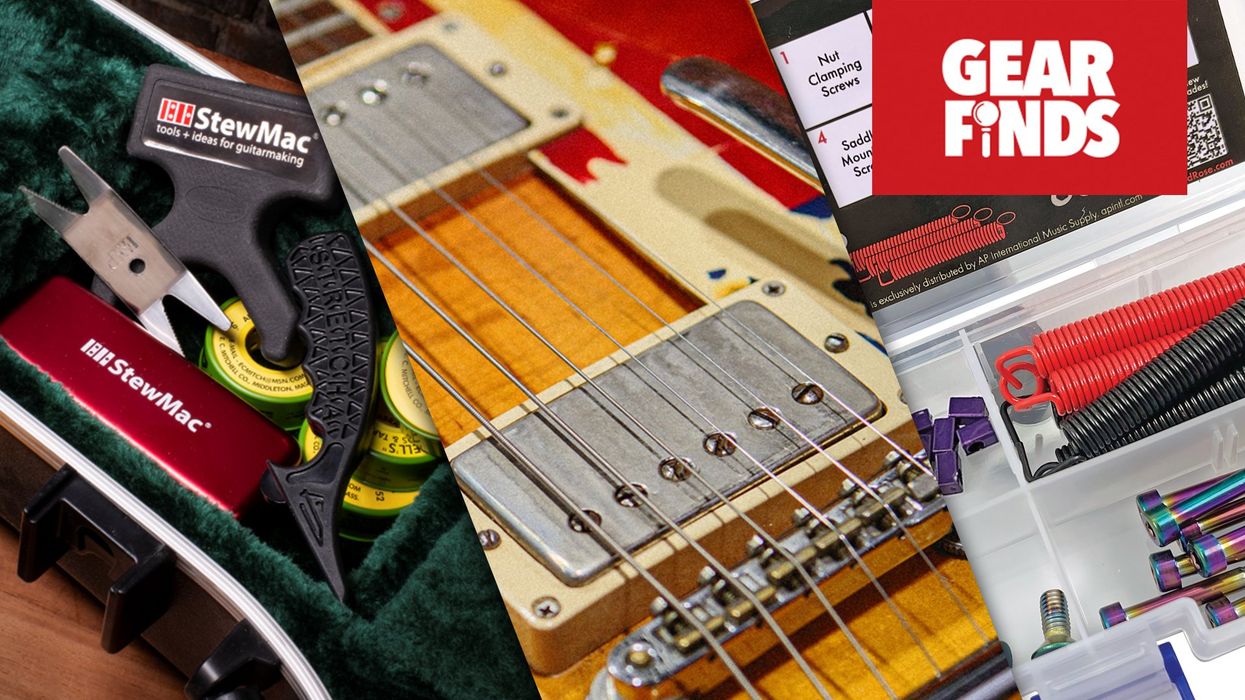
Unlock your guitar's true potential with the Fralin Pickups Push-Pull Blender Pot! Blend tones, split coils, and explore endless sonic possibilities without permanent changes. Ready to elevate your sound? Check out the Joe Bonamassa Humbucker Set and more gear to keep your music alive!
Fralin Pickups
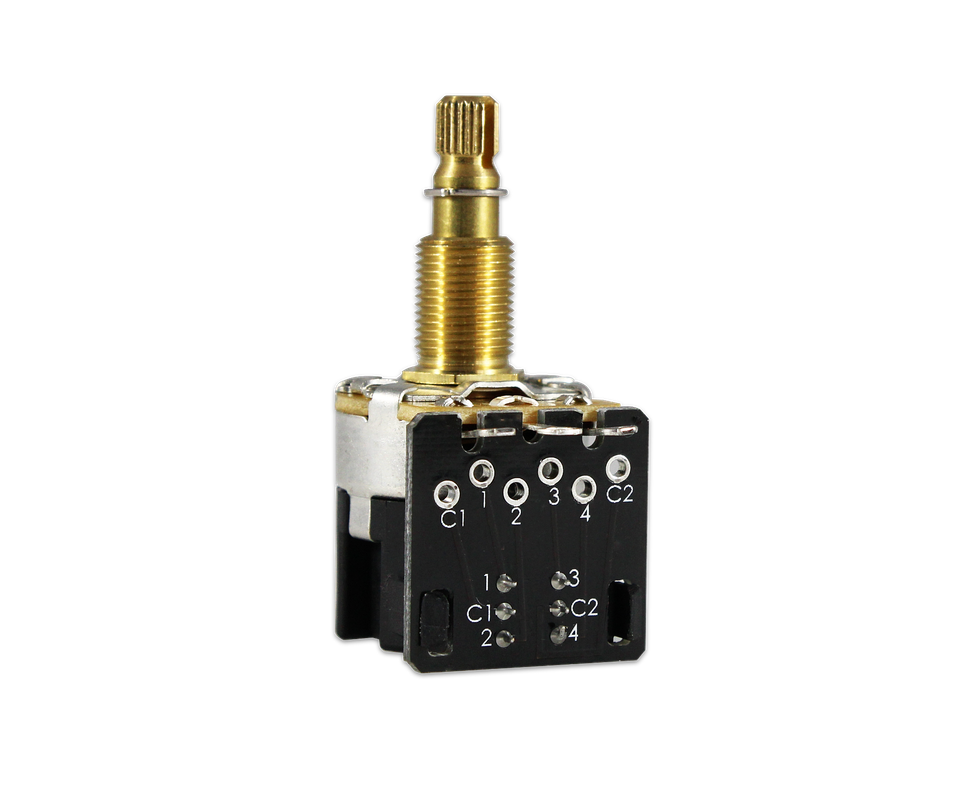
Push Pull Blender Pot
Unlock a wider range of tones with the Fralin Pickups Push-Pull Blender Pot. Compatible with guitars and basses, this versatile control blends pickup outputs, adds coil-splitting and out-of-phase options, and enables many wiring mods—giving you flexible, player-friendly tonal shaping without permanent changes to your instrument.
$25 street
Graph Tech
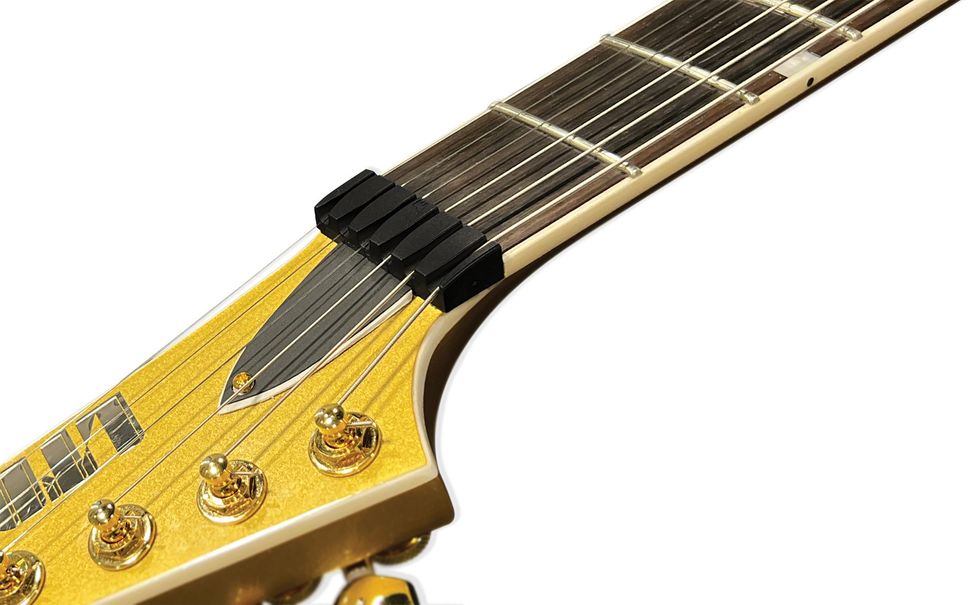
Un-Lock Nut
Unlock your nut and release the beast!
$35 street
Seymour Duncan
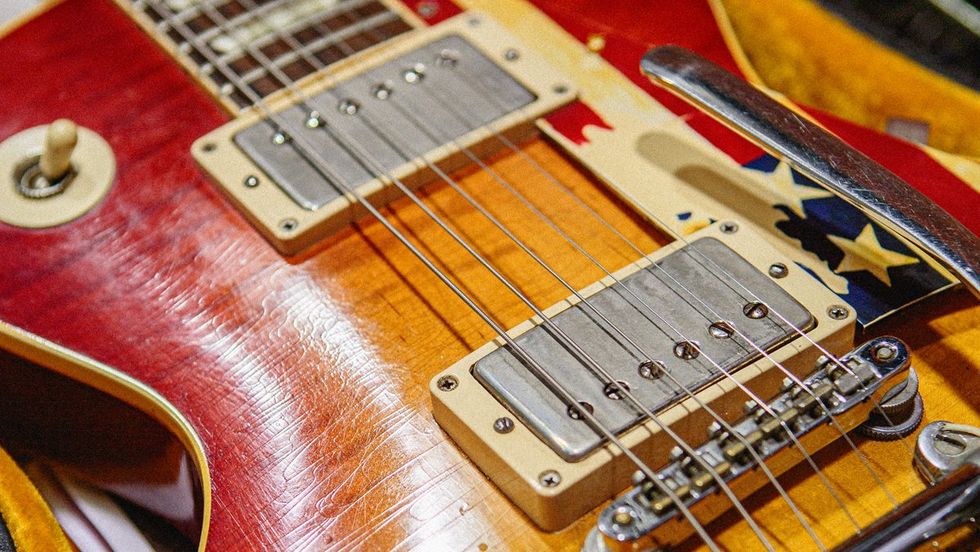
The Joe Bonamassa “Bolin Burst” Humbucker Set
Joe Bonamassa has long been a fan of Tommy Bolin, whose work influenced generations of guitarists. After a 10-year search, Joe acquired Tommy’s 1960 Gibson Les Paul and worked with the Seymour Duncan Custom Shop to recreate these P.A.F.s. The first 500 sets are signed by Joe and Seymour Duncan.
$375 street
StewMac
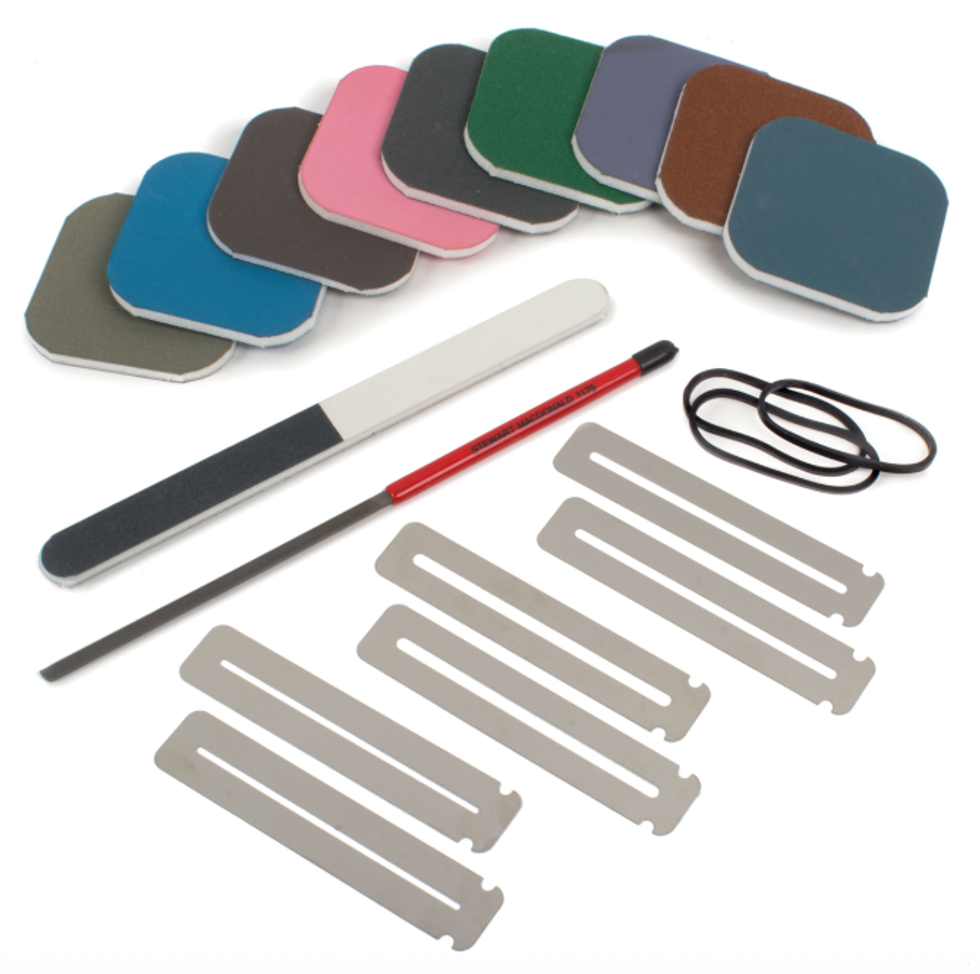
Rough Fret Smooth + Shine Set
Don’t let fret sprout stop you from playing your favorite guitar. This kit has everything you need to fix it yourself. When dry weather comes around, your fretboard can shrink and the fret ends poke out. Sharp fret ends can slow you down, feel uncomfortable, or cut your hand.
$69 street
StewMac
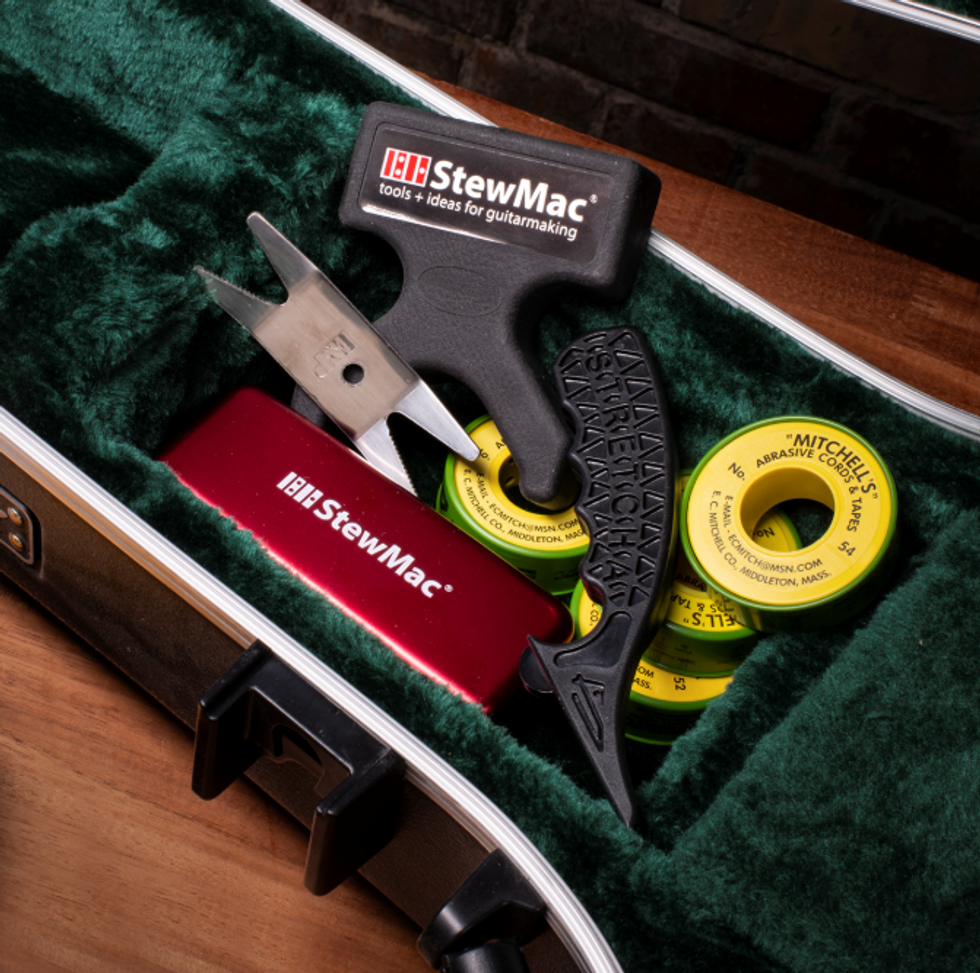
StewMac Guitar Tech Case Candy Set
When performing live, the small problems can turn a great show into a nightmare. A loose screw, slipping string, or guitar poorly leaned against an amp can create major stress. So, we created the Guitar Tech Case Candy Set—a compact collection of essential tools designed to keep your guitar stage-ready.
$140 street
stewmac.comFloyd Rose
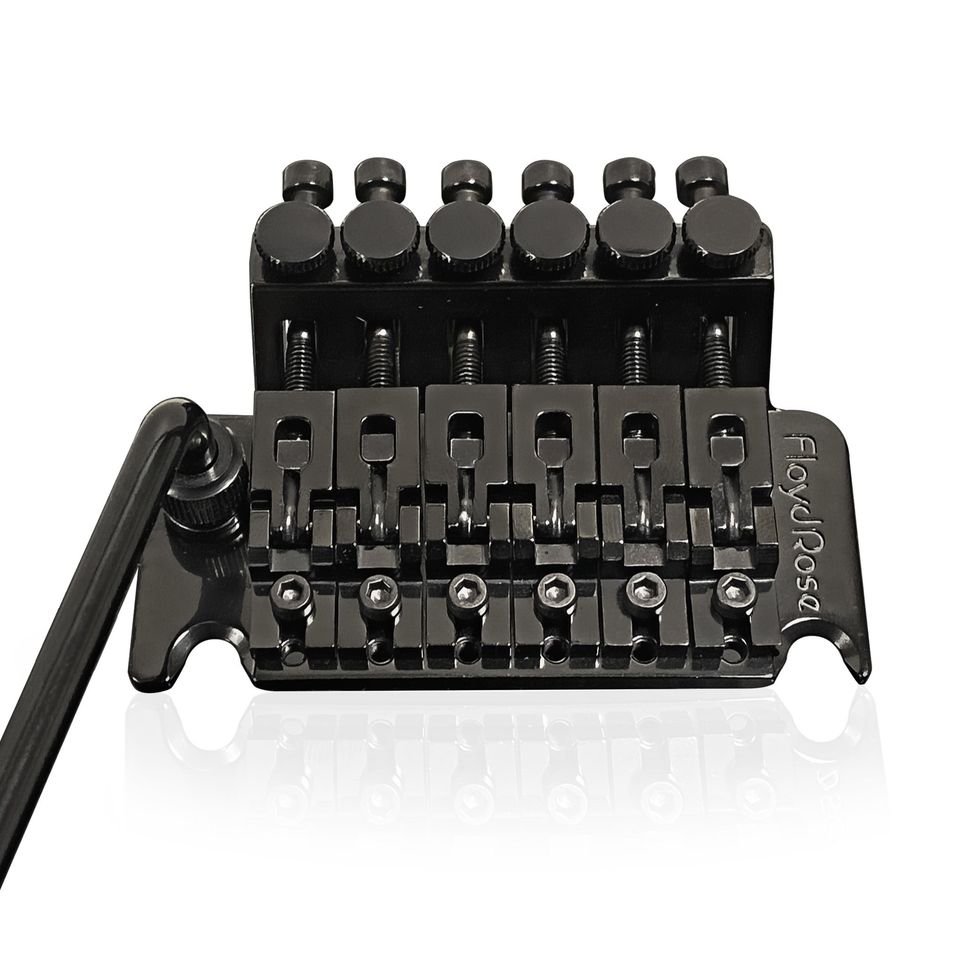
USA Original Radius Saddle Sets
Designed for matching specific fretboard curvatures, Floyd Rose Original saddle sets now offer several radius options without the need for individual saddle shims. Crafted in the U.S. from high-quality tool steel using precision CNC machining, the saddles are then heat-treated and plated to withstand the demands of the heaviest performers.
$110 street
Floyd Rose
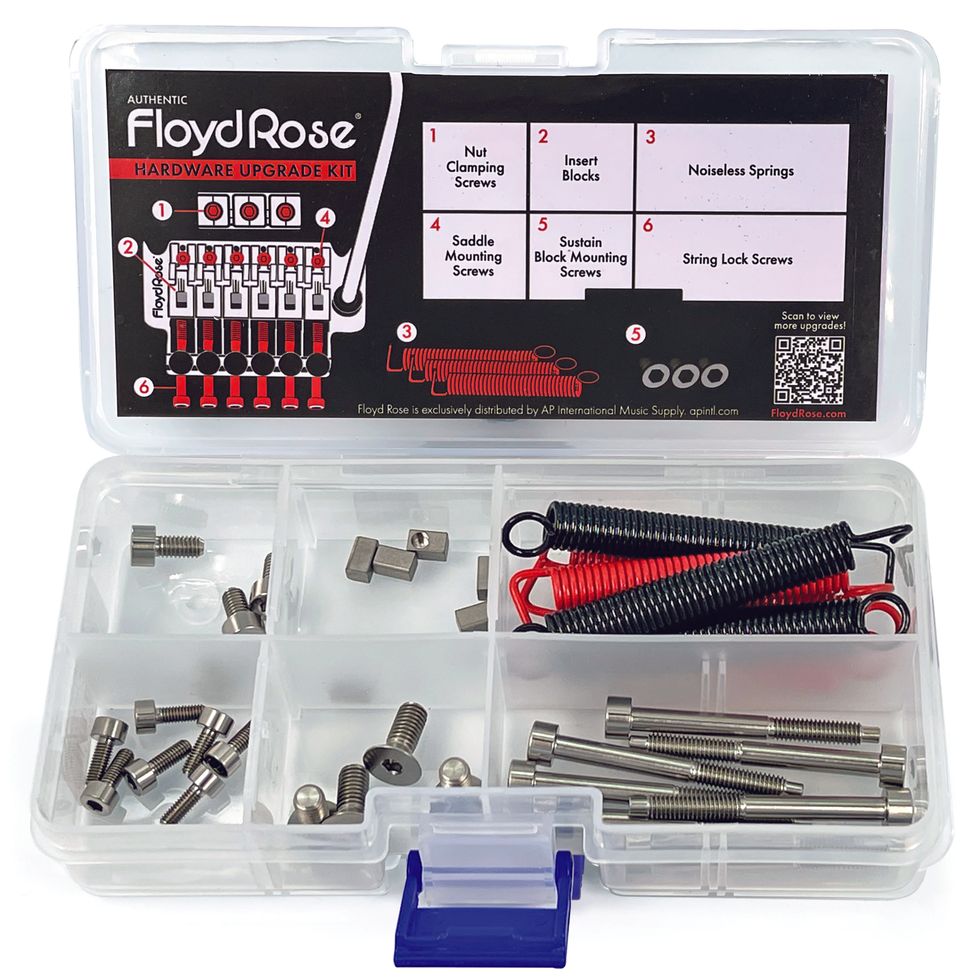
Hardware Upgrade Kits
Introducing authentic upgradable hardware kits for FR Tremolo Systems, available in eight stainless steel finishes as well as titanium. Each hardware upgrade kit comes with seven string-lock screws, seven saddle-mounting screws, four nut-clamping screws, four block mounting screws, and string lock insert blocks.
$63 street
Check Out This Pristine 1959 Les Paul Custom
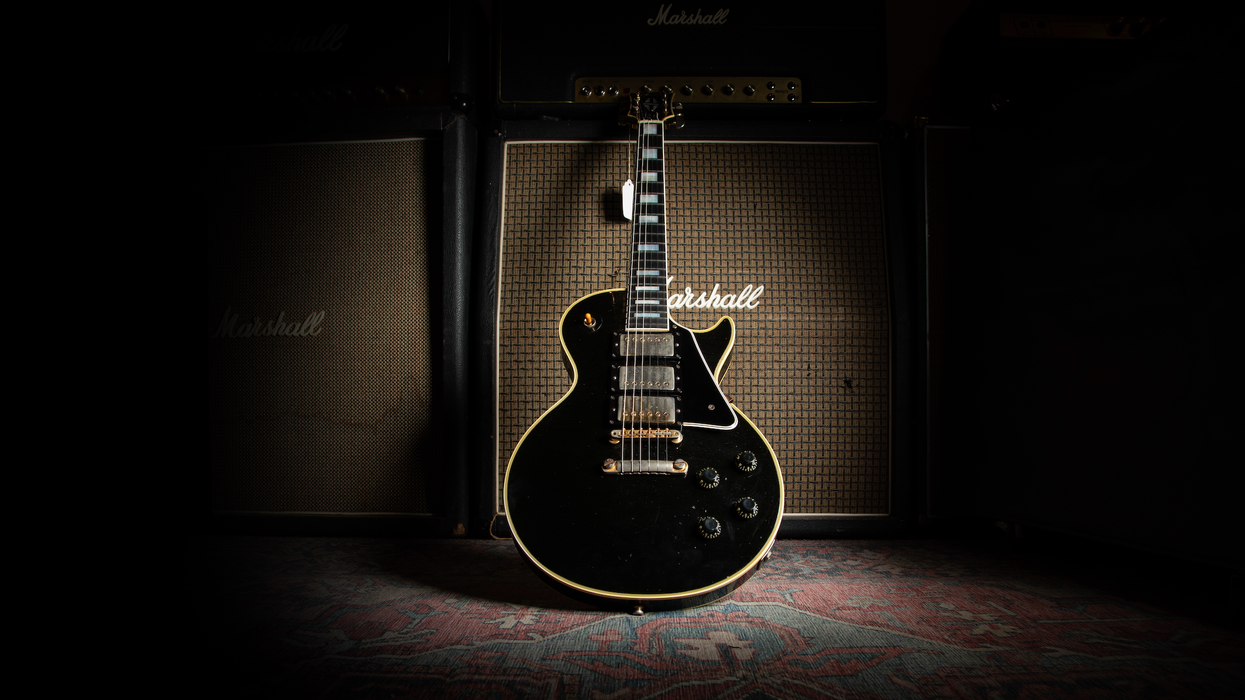
It’s been a minute since we’ve gotten to share something truly special with you all, and today’s subject is one of the finest: a 1959 Gibson Les Paul Custom.
Gibson introduced the first Les Paul Customs in late 1953, following a couple of prototypes built for Les Paul a year earlier. Les wanted what he called a “more elegant” version of the Les Paul Standard, something that looked sharp on the booming new medium of television. His request was specific: a black guitar with refined appointments and design tweaks to match his playing style.
The original Customs carried two pickups: an alnico “staple” single-coil in the neck and a P-90 in the bridge. They featured black finishes, white binding, gold hardware, and the split-diamond headstock inlay we now associate with the model. The headstock was slightly larger than the Standard’s, and the carve at the scarf joint was lengthened for easier play near the nut.
Perhaps the most distinctive feature was the fretwork. Les requested low, wide frets, which led to the nickname the “Fretless Wonder.” While iconic, these frets can feel unusual to modern players. Still, Les’ highly developed technique probably made frets almost unnecessary for him. Another major innovation appeared on the Custom: the debut of the ABR-1 Tune-o-matic bridge, finally giving players accurate intonation adjustment.
Here’s an interesting twist in the Custom’s story. Les’ original vision called for the Standard to be built from solid mahogany with a gold-painted top, and the Custom to use a maple cap on mahogany, finished in black or white. Gibson flipped those specs. The production Standard ended up with a maple cap, while the Custom was built entirely of mahogany.
The all-mahogany build gave the Custom a darker sound, so Gibson used an ebony fretboard to restore some brightness. Meanwhile, the maple-topped Standard was paired with a warmer Brazilian rosewood ’board. Ironically, it wasn’t until 1968 that the Custom attained the maple top Les had wanted all along.
“Instruments like this inspire players across generations.”
The next major leap came in 1957, when Gibson introduced Seth Lover’s groundbreaking humbucking pickups. By mid-year, the Les Paul Custom carried not two but three humbuckers. This gave players a wide tonal palette spanning jazz, pop, country, blues, and eventually rock. In time, artists like Keith Richards and Jimmy Page made unforgettable recordings on Customs, further cementing the model’s place in music history.
That brings us to the stunning 1959 Les Paul Custom currently here at Carter Vintage. I had the chance to spend a morning with it, and it’s easily one of the best-playing guitars in the shop.
Remember my earlier complaint about the “Fretless Wonder” frets? This one has been given a perfect refret by our repair shop. The result is transformative. Suddenly the Custom plays effortlessly, like a hot knife through butter. The setup is dialed in to perfection, and honestly, I walked away a little jealous. It convinced me that a couple of my own guitars need some attention from our techs.
Plugged into a Deluxe Reverb, the guitar absolutely sang. The original PAF pickups deliver remarkable clarity and punch. There’s excellent balance between the bridge and neck, and the middle position, often prone to phase issues, sounds smooth and full-on. Perfect for bluesy bends or country runs.
The neck deserves its own praise. It’s the quintessential ’59 carve: not too big, not too thin, with shoulders that make it feel more manageable than its actual measurements (.89" at the nut, 1.01" at the 12th fret) suggest. Simply put, it’s a neck that disappears in your hands, feeling comfortable, fast, and inspiring.
This particular Custom has been thoughtfully maintained. Aside from the refret and a new nut, the electronics and pickups remain untouched, and the finish is all original and in excellent condition. At about 9.5 pounds, it’s substantial, but its balance makes it feel lighter than the number on the scale suggests.
The Les Paul Custom has always been a guitar steeped in history. Born from Les Paul’s vision, refined by Gibson’s innovations, it was carried into legend by the players who made it sing. This 1959 example embodies all of that and more. With its perfect refret, killer PAFs, and ideal ’59 neck, it’s a joy to play and living proof of why this model continues to hold such a revered place in guitar history.
For me, it wasn’t just another morning with a guitar—it was a reminder of why instruments like this inspire players across generations.
Written with help from Andrew White.
Meet Your Instructors | Acoustic Guitar Couch Camp 2025
Striking a New Chord

I’ve been writing about music and music gear, in one form or another, for many decades now. I’ve been playing music—writing, recording, performing, for even longer. And I’ve been reading music magazines—specifically guitar magazines—longest of all.
As a child, music magazines were treasure troves of insider knowledge and practical—or, depending on the artist being interviewed, thoroughly dubious—wisdom. They were to be studied, pored over, dog-eared, and piled in messy, corner-of-the-room stacks that eventually got jammed into messier, stuffed-to-the-point-of-exploding cabinets. With guitar magazines, this fascination, and pack-rat behavior, was amplified in every way. It felt like the secrets to an entire universe were unlocked every month. And not just the basics like how to play, what to buy, and what was new. You learned how to write and arrange music, how to change strings, how to repair necks, how to wire pickups, how to modify amps, how to design a signal path, how to establish your own unique sound. How to create.
This creative spirit is what I feel has always set guitar magazines apart, from back in the days when the industry was crammed full of titles and print was the main engine, to now, when it’s even more crucial to give readers something tangible—to entertain, but also to teach. To explore and inspire. To discuss, commiserate (because let’s face it, this world can often be frustrating and challenging), and build community around our shared obsession.
This mindset led me into journalism and has kept me here all these years. And so it’s with tremendous excitement and pride that I join Premier Guitar as your new Editorial Director. I’ve been reading the title since its inception, and over the years have contributed stories on artists I greatly admire—I’ll point to interviews with Thurston Moore and Jim Campilongo as two recent examples. I’ve known our recently retired Editorial Director Ted Drozdowski since I was a managing editor in my first magazine job out of college (trust me—that’s a long time), and I thank him for this incredible opportunity.
I’ve always loved Premier Guitar for delivering quality content from some of the most knowledgeable people in the industry. And it’s not just about putting the stars of the day in every issue—we tell stories from every corner of our musical universe. This issue exemplifies that approach. We celebrate the unsung heroes who keep our industry humming, with a feature on StewMac and Allparts—companies that have revolutionized the DIY guitar universe, and spotlight the often-overlooked guitar techs whose expertise keeps our biggest names sounding their best, night after night.
We also showcase the standard bearers and icons. We sit down with legends like Vernon Reid, a fellow New Yorker whom I had the privilege of interviewing about his new solo album, Hoodoo Telemetry, which finds him gathering sounds and influences from across space and time. We go deep with ascending talents like Daniel Donato, whom I recently watched deliver some incendiary cosmic country with his band, the aptly named Cosmic Country, ripping truly mind-boggling licks on his DGN Custom Epoch semi-hollow under a perfect late-summer evening sky. We dive into experimental territories with Los Angeles metal band Agriculture and their challenging new record The Spiritual Sound, and visit with Winnipeg’s Living Hour to explore their dreamy, noisy soundscapes.
And on our cover, we have Daron Malakian—a figure who straddles both worlds as one of the oddest and most unlikely mainstream rock stars—examining his creative process with both System of a Down and his own project, Scars on Broadway. His approach to songwriting and guitar playing challenges conventional thinking in the best possible way.
But none of these artists outshine our columnists, who month after month provide some of the most insightful commentary in the guitar universe. Their expertise and passion illuminate everything from technique to tone, from vintage gear to cutting-edge technology. They cover everything from oddities to esoterica to recording to performing, drawing from lifetimes of experience.
And then there’s the gear itself—the star of our show. Whether you’re hunting for your next dream guitar, investigating the latest pedal innovations, digging into amplifier design, exploring software and recording technology, or tracking down that one missing link that’ll finally complete your rig, we’re here to guide you through it all.
There’s also exciting news on the horizon. We’re working on a fresh new look and implementing several behind-the-scenes improvements that will enhance your Premier Guitar experience. Stay tuned—good things are coming.
My goal is simple: to continue Premier Guitar’s tradition of being your most trusted guide through this ever-changing landscape. Whether you’re a weekend warrior, a touring professional, or somewhere in between, we’re here to feed your passion, fuel your creativity—and help you seriously geek out on guitars and gear.
Now let’s make some music together.
Podcast 517: Jacob Cole
Melbourne, Australia-based guitarist Jacob Cole joins us this week to talk about his 2025 instrumental album ‘Slow Gold’ and so much more. We hear about his Cole’s record-filled childhood, the Melbourne guitar scene, recording in Tasmania (!), and his influences. It’s an insightful chat with an artist we think you’ll love.
https://jacobcole1.bandcamp.com/album/slow-gold
Read the poignant story Jacob’s sister penned for the Guardian here:
https://www.theguardian.com/commentisfree/2025/jul/07/i-spoke-for-my-brother-when-he-was-too-afraid-to-answer-now-he-speaks-in-melodies-and-i-have-learned-to-listen
Our new, 57th issue is now mailing. You can subscribe here to get it.
Our next Fretboard Summit takes place August 20-22, 2026 at the Old Town School of Folk Music in Chicago. https://fretboardsummit.org
We are brought to you by: Stringjoy Strings: https://stringjoy.com
(Use the code FRETBOARD to save 10% off your first order)
Mike & Mike’s Guitar Bar: https://mmguitarbar.com
Peghead Nation: https://www.pegheadnation.com (Get your first month free or $20 off any annual subscription with the promo code FRETBOARD at checkout).
The post Podcast 517: Jacob Cole first appeared on Fretboard Journal.
“I’ll probably be buried with it!”: Greta Van Fleet’s Jake Kiszka on his most beloved and battered guitars

Few guitarists have a bond with their instrument quite like Jake Kiszka and his 1961 Gibson Les Paul SG. And that bond was strong from the moment he laid his hands on it.
As the story goes, Kiszka and his now-beloved SG first met during the early days of Greta Van Fleet, when he paid a visit to Chicago Music Exchange, of which the band’s manager knew the owner. As he tells Guitar.com in the latest episode of My Guitars & Me, the owner suggested he try the guitar out, “based on everything I was into at the time”.
And the moment he plugged it in, it was a moment of “divine intervention”, he recalls. “It was like lightning split from the sky – it was really unbelievable. It was everything that I had been looking for sonically in a guitar my whole life was right here.”
While it commanded a hefty $25,000 price tag, the owner generously let Kiszka walk away with the guitar and take it on tour with GVF, on the condition that he pay him back when he was able. “It was incredible on him for letting me do that,” Kiszka says.
The ‘61 Les Paul SG has been Kiszka’s go-to guitar ever since, and you don’t need a magnifying glass to tell it’s taken some wear and tear over the years.
“This is what happens when you start wearing rhinestones on suits with no jacket over them. And this is what my nipples have done,” he jokes. “It looks like a cutting board, doesn’t it? It’s a lot lighter than when I got it – I’ve sanded it away!”
The wear and tear is so extreme, Kiszka says, that Gibson would have to invent an “entirely new specification of aging level” to recreate the guitar as a true-to-life signature model.
Through their thousands of hours together, Jake Kiszka has developed a bond with his SG that few guitarists will ever enjoy with their instruments.
“I’ll probably be buried with it!” he jokes. “There’s a piece of me in this guitar, but there’s also a piece of this guitar in me. In reality, a lot of my playing, and the way that I’ve developed playing have actually come from this very specific instrument.”
Elsewhere in the episode, Kiszka shows off the custom Martin 00-28 he had designed specifically for his side project, Mirador.
“I wanted to find something that could be the guitar that would be the Mirador acoustic. I went to Gibson. I went to tonnes of people to do something specifically, with certain types of inlays, obviously. I went to Martin and asked if they could do this and they said, ‘Yes.’”
Kiszka says he was after an aged-looking “renaissance”-style guitar, and one with a slotted headstock. “I’m like, ‘Could you guys build me a pirate guitar.’ This is what they came up with, which is quite brilliant,” he says.
Watch the full episode of My Guitars & Me with Jake Kiszka below.
The post “I’ll probably be buried with it!”: Greta Van Fleet’s Jake Kiszka on his most beloved and battered guitars appeared first on Guitar.com | All Things Guitar.
Martin Guitar Unveils OM Mikael Åkerfeldt Signature Model
Today at Guitar Summit in Mannheim, Germany, C. F. Martin & Co.® unveiled the OM Mikael Åkerfeldt, a limited-edition acoustic created with the Opeth frontman. Only 74 guitars will be made worldwide, honoring the Swedish musician’s 1974 birth year.
The OM Mikael Åkerfeldt blends Martin’s renowned craftsmanship with bold new features. It pairs a torrefied spruce top with a dramatic three-piece back of Guatemalan rosewood and an East Indian rosewood wedge, accented by European flamed maple binding. For the first time in a traditional body, Martin has introduced its Low Profile Velocity neck—designed for our SC models, and ideal for players used to the speed and comfort of an electric.

Personal details include an ebony fingerboard with black mother-of-pearl Roman numerals and black Liquidmetal® bridge pins for added sustain and clarity. Inside, VTS-treated spruce and Golden Era scalloped X-bracing—as featured on the Modern Deluxe Series—deliver vintage warmth and dynamic response.
“Is this the best guitar I’ve ever played? Including the ones in your museum? I believe so,” Mikael said. “It just sings—the resonance, the clarity, the low end. Everything about it feels magnificent.”
Each guitar includes a laser-etched stainless-steel label and custom Harptone case.
ABOUT MIKAEL ÅKERFELDT
Mikael Åkerfeldt is the frontman, guitarist, and primary songwriter of the pioneering progressive metal band Opeth. Since joining in the 1990s, he has led the group from its death metal roots into genre-defying territory, blending guttural growls with clean baritone vocals and weaving progressive rock, folk, and classical influences into its sound. Under his leadership, Opeth has earned two Swedish Grammis awards and established itself as one of Scandinavia’s most influential metal bands.
Mikael's artistry extends well beyond Opeth. He co-founded Storm Corrosion with Steven Wilson, contributed vocals to Bloodbath, and composed the score for the Netflix series Clark. Ranked among the greatest modern metal guitarists, he is also a devoted vinyl collector and music historian with a deep reverence for tradition and craft. His connection to Martin guitars goes back to the early ’90s, when he sold them at a small shop in Stockholm. Decades later, that relationship comes full circle with his own signature Martin—a collaboration that unites elegance, darkness, and uncompromising creativity.
NS Design Unveils New Carbon Fiber Fin Guitar and Bass
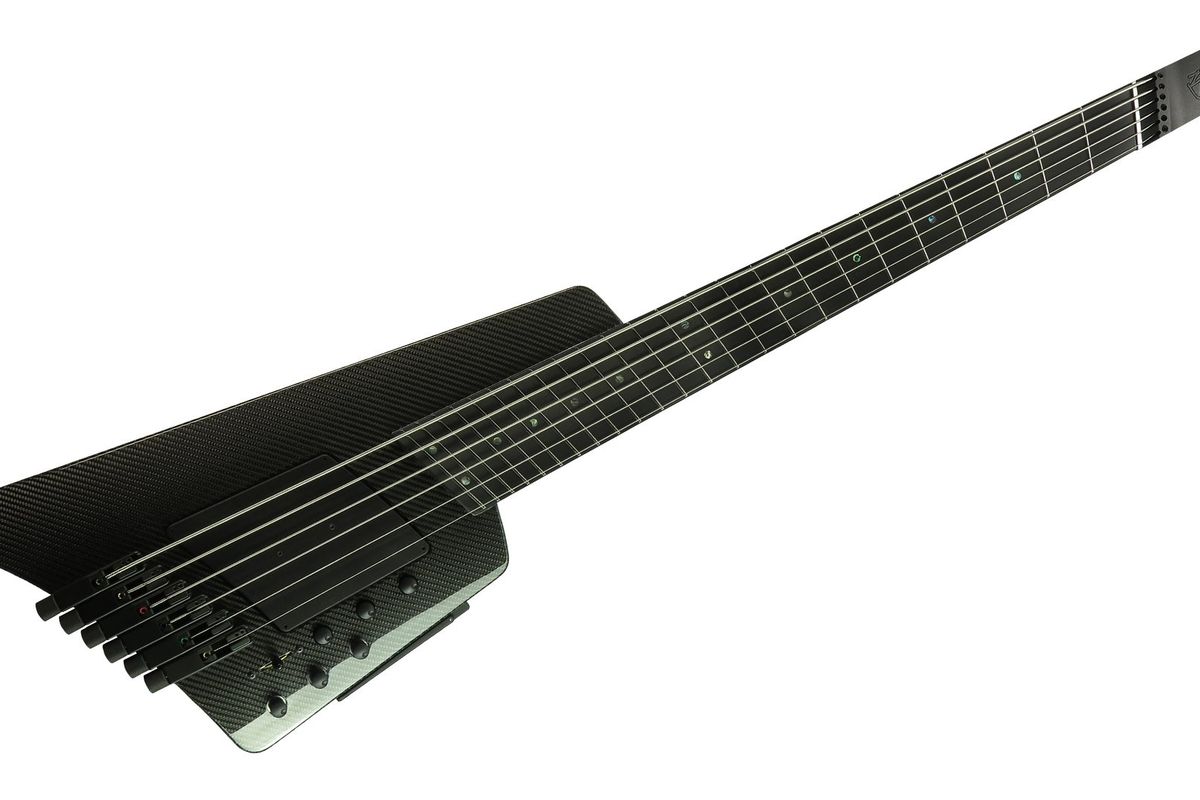
Ned Steinberger, inventor of the headless bass, has unveiled his new NS Design Fin guitar and bass at the Mannheim Guitar Summit in Germany. These multiscale instruments are available in 6-string configurations and combine cutting-edge carbon fiber construction with innovative electronics to deliver unparalleled sonic performance for the modern musician.
Key features of the NS Fin Guitar and Bass include:
- All-carbon fiber construction for extended sustain, brilliant harmonics, and bold low-end response.
- Lightweight ergonomic design - Guitar weighs just 5½ lbs., bass only 8 lbs., with perfect balance.
- Modular pickup configuration allows any combination of humbucking and single-coil pickups.
- Revolutionary Activator™ circuit by Mi-Si™ with supercapacitor power and up to 12dB boost.
- Fulcrum™ tuning system features a patented self-clamping mechanism for quick string changes.
- The scale length ranges for the guitar and bass - Guitar: low E string 26 inches, high E string 25 inches. Bass: low E string 35.3 inches, high C string 32.7 inches.
- Multiscale fretboard provides optimized string tension and intonation for enhanced playability.
NS Design’s Fin Guitar is priced at $8,500 USD, and the Fin Bass is priced at $9,500 USD. They are available in a limited-edition run of 12 each, made in USA from 100% carbon fiber. For more information visit thinkns.com.
PRS SE NF 53 Review
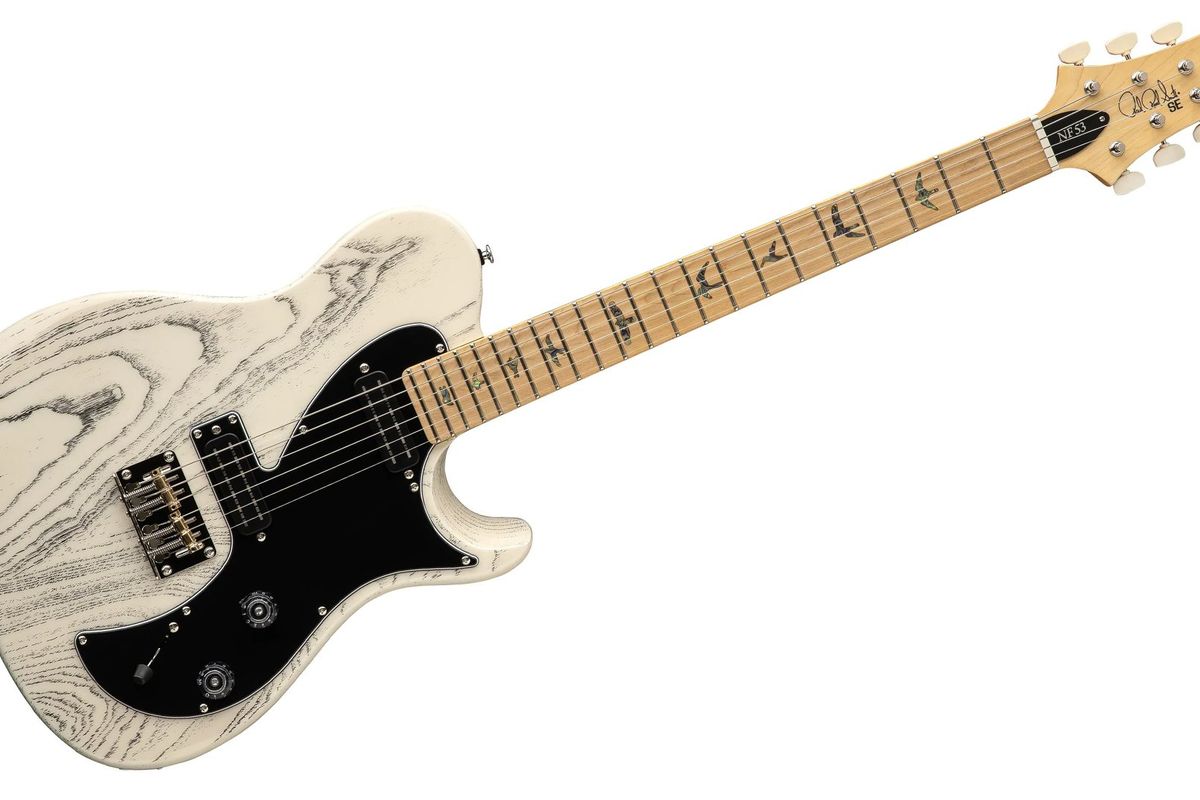
Like the Silver Sky, the NF 53 revealed Paul Reed Smith’s deep reverence for classic Fullerton designs and curiosity about how to expand on those templates. 2023’s NF 53 release left us impressed, and it was only a matter of time until an offshore-built SE model followed. That time has come: The SE NF 53 is here, dressed in the same lines and livery as the USA-built model, but at a more affordable price point thanks to PRS-licensed and supervised manufacturing by the Cor-Tek Musical Instrument Co. in Indonesia.
Like the NF 53, the SE model is more a riff on the Telecaster theme than a copy. Unburdened by tradition, PRS carved away at every line of the single-cutaway form, and the electronics are very much about enhancing versatility, rather than reducing componentry to the absolute basics. Even so, the SE NF 53 still drips with Tele-ness.
Single-Cut Minded
T-style traditionalists will find much that feels familiar, like the 25.5" scale length and bolt-on maple neck. From there, though, the SE NF 53 deviates from vintage T-style spec pretty quickly. There are 22 medium-jumbo frets, and the neck is constructed with a scarf joint that increases strength at the headstock break. The maple fretboard is sliced away from the neck and reglued after installation of the truss rod. Its width at the nut falls between Gibson and Fender camps at 1 41/64". The 10" radius also splits the difference between vintage Gibson and Fender specs, and it all feels great in hand courtesy of a rounded-C profile that measures about .87" deep at the first fret. The guitar’s overall weight is around 8.1 lbs.
In Telecaster style, the SE NF 53’s body is made from swamp ash—in this case, using 3-piece construction. It features belly and forearm contours, and a contoured cutaway for easier upper-fret access. PRS maximized the drama of the ash’s distinctive grain with a white doghair finish on our review sample, and black grain filler makes the wide, rippling lines pop and weave beneath the white. They reverse the effect entirely on the black doghair version, and hide the grain entirely on the pearl white finish.
In the hardware department, the SE NF 53’s bridge nods to a vintage Telecaster’s brass barrel saddles, but it uses a steel-base design with string-anchor notches rather than through-body stringing. It also deviates from T-style tradition by assigning three strings to a saddle with two adjustment bolts, rather than three saddles with two strings each.
Like the USA model before it, the SE NF 53 is fitted with a pair of PRS’s Narrowfield DD pickups, although these are the “S” variant, which are designed to enhance low-end tones while retaining snarl and twang. The “DD” stands for deep dish, meaning these single-coil-sized humbuckers are made with deep bobbins to enable extra coil windings, using a mix of magnet pole pieces with steel poles in between. They are wired through master volume and tone controls and a three-way selector switch on a plate that nods toward the late ’60s Fender Telecaster Thinline.
Taken together, the SE NF 53 is a cohesive design, made stronger by its robust build quality. There’s no real lack of refinement in evidence when compared to the USA model. Some of the woods and components are a different grade, but the overall result is a guitar that lends a sense of confidence.
Field Day
Plugged into a Fender Bassman head and 2x12 cab, a Vox AC15 1x12 combo, and a Fractal FM9 into headphones, the guitar reveals a genuine alternative to the T-style formula suggested by its components. Its character is distinctly its own—and with noticeably less hum.
The Narrowfield DD “S” pickups play a big part in the guitar’s success. The easiest reference point I can think of might be a blend of Telecaster and P-90 tonalities, but with plenty of their own thing going on. With a clean amp or setting there’s a meaty growl on top of the twang. Yet the guitar isn’t short on bright, sparkly chime, and sounds alive in those frequencies without being strident or spikey. This sonic foundation puts edge-of-breakup tones right in the SE NF 53’s wheelhouse, where the chewy bite segues into a little bit of breakup when you hit it hard. And it’s just as comfortable with high-gain tones, where the same sonic characteristics that contribute sweetness in cleaner settings enable clarity and cutting power while avoiding harshness in the highs. In fact, the guitar is at home in so many settings, sharing a Telecaster’s versatility and its effortless ability to handle almost anything with style.
The Verdict
The NF 53 platform is a very likeable tribute to the seminal T-style without trying to replicate it and, as a result, it’s versatile and inspiring guitar in its own right and in its way. And in the SE version of this design it delivers at a price that belies its vocabulary and its confidence.
Ace Frehley cancels show following fall in his home studio

Founding Kiss guitarist Ace Frehley has cancelled his upcoming show at the Antelope Valley Fair in Lancaster, California after suffering a fall in his home studio.
In a statement posted yesterday (25 September) on his social media channels, Frehley’s team offered more detail about the incident.
“Ace had a minor fall in his studio, resulting in a trip to the hospital,” the statement reads. “He is fine, but against his wishes, his doctor insists that he refrain from travel at this time. As a result, he is forced to cancel his performance at the Antelope Valley Fair on Friday, 26 September.
“Please go to the fair to support his friends in Quiet Riot and Vixen, and Ace looks forward to continuing on his tour and finishing work on his next album, Origins Vol. 4.
Despite the statement, the 74-year-old guitarist has yet to release the third installment of his Origins album series, following Origins Vol. 2 in 2020.
Earlier this year, Frehley told Eddie Trunk that Vol. 3 was in the process of being recorded with producer Alex Salzman, who also worked on the first two installments.
“We have a formula that we came up with and it seems to work,” he said [via Blabbermouth]. “I was listening to the records last night on YouTube, you know. In my office, on my desk, I have a set of Bose speakers, and the album sounds just as good as the new album, 10,000 Volts [which landed in 2024]. So I’m gonna keep that.”
“I’m gonna go back to my old formula with Alex and maybe I’ll bring back Steve [Brown, Trixter guitarist who also worked on 10,000 Volts] to do the studio album since he’s a very, very good songwriter and guitar player and engineer, as well.”
In other news, Frehley recently detailed how he declined an invitation to appear at the Kiss Kruise: Land-Locked in Vegas event. “They asked me and I declined. There’s no way I’m gonna be involved in that,” he said.
The post Ace Frehley cancels show following fall in his home studio appeared first on Guitar.com | All Things Guitar.
Brian May admits he still finds it hard to play Queen’s Bohemian Rhapsody: “I still have to keep my wits about me or I’ll fall off the train”

You’d think after half a century of playing one of the most famous songs in rock history, Brian May would have it down cold. But according to the Queen guitarist, Bohemian Rhapsody remains as tricky as ever – so much so that he still has to ‘keep his wits about him’ every time he plays it.
Speaking to Rolling Stone, May shares how the complexity of Freddie Mercury’s writing made the track both exhilarating and challenging to play.
“The idea for all the instrumental stuff in Rhapsody was growing while I was listening to him developing the song,” he says. “Freddie had some amazingly lateral thought processes. It was always easier for me to play on his songs than mine, ’cause there was so much stimulation coming.”
That said, the six-minute track is no walk in the park, even for its original guitarist.
“Bohemian Rhapsody is never that easy to play, even after all these years,” May admits. “I still have to keep my wits about me or I’ll fall off the train.”
And while the song continues to test him, the grind of constant touring is another challenge altogether. Though fans may be clamouring for yet another Queen tour, May, now 78, admits that life on the road no longer holds the same appeal.
“ I’ve had 50 years of touring and there’s a part of me that thinks it’s enough,” he says. “I don’t like the idea that you wake up in your hotel room and you’re trapped. I had a few experiences recently where stuff happened at home with my family and I could not go home. It got under my skin and I just thought, ‘I’m not sure if I want this anymore.’ I feel like I’ve given up my freedom too many times. So my feeling at the moment is I don’t want to tour as such. I still want to play shows. I still want to innovate.”
That innovation may soon find a new home in Las Vegas. May has his sights set on a Queen residency at the Sphere, the high-tech venue with 360-degree visuals that left him stunned after watching the Eagles perform there.
“ I’m very keen on the Sphere,” says the guitarist. “It’s got my mind working. I sat there watching the Eagles, thinking, ‘We should do this. The stuff that we could bring to this would be stupendous.’ So, yeah, I would like to do it. We’re having conversations.”
The post Brian May admits he still finds it hard to play Queen’s Bohemian Rhapsody: “I still have to keep my wits about me or I’ll fall off the train” appeared first on Guitar.com | All Things Guitar.
“Why would I want to do it the same?”: Why David Gilmour “never learned” this classic Pink Floyd guitar solo

Few guitar solos are as universally revered as the climactic second solo in Comfortably Numb. It’s the soaring, heart-wrenching finale to one of Pink Floyd’s most enduring songs, and the kind of performance many guitarists have spent decades trying to replicate. Yet the man who wrote it – prog wizard David Gilmour – admits he’s never actually learned it when it comes to playing live.
Speaking with Rick Beato in a recent interview, the Floyd guitarist explains that the solo, while immortalised on The Wall, has never been something he felt the need to reproduce exactly.
“I’m not thinking about the audience and what they want, to be honest,” he explains. “I just like it starting the way it starts, and the rest of it is so ingrained in me that the various parts of it are going to find their way into what I’m doing.”
“But I’ve never learned it. Yeah, I’ve never learned that guitar solo.”
For Gilmour, the live experience is about feeling the moment rather than sticking to a routine formula: “I mean, there are a lot of guys who can play that. But I don’t play it,” he laughs.
“To me it’s just different every time. Why would I want to do it the same? Would it be more popular with the people listening if I did it exactly like the record? Or do they prefer that I just wander off into whatever feels like the right thing at the time? I don’t know. I suspect they prefer it to be real, and to be happening, you know?”
Still, his improvisational spirit doesn’t mean he’s completely unmoored from the studio version.
“There are cues within it, which I use to tell the band, ‘We’re going to end,’ or, ‘We’re going to do this,’” says Gilmour. “And so, they crop up as being the same every time, pretty much.”
The post “Why would I want to do it the same?”: Why David Gilmour “never learned” this classic Pink Floyd guitar solo appeared first on Guitar.com | All Things Guitar.



